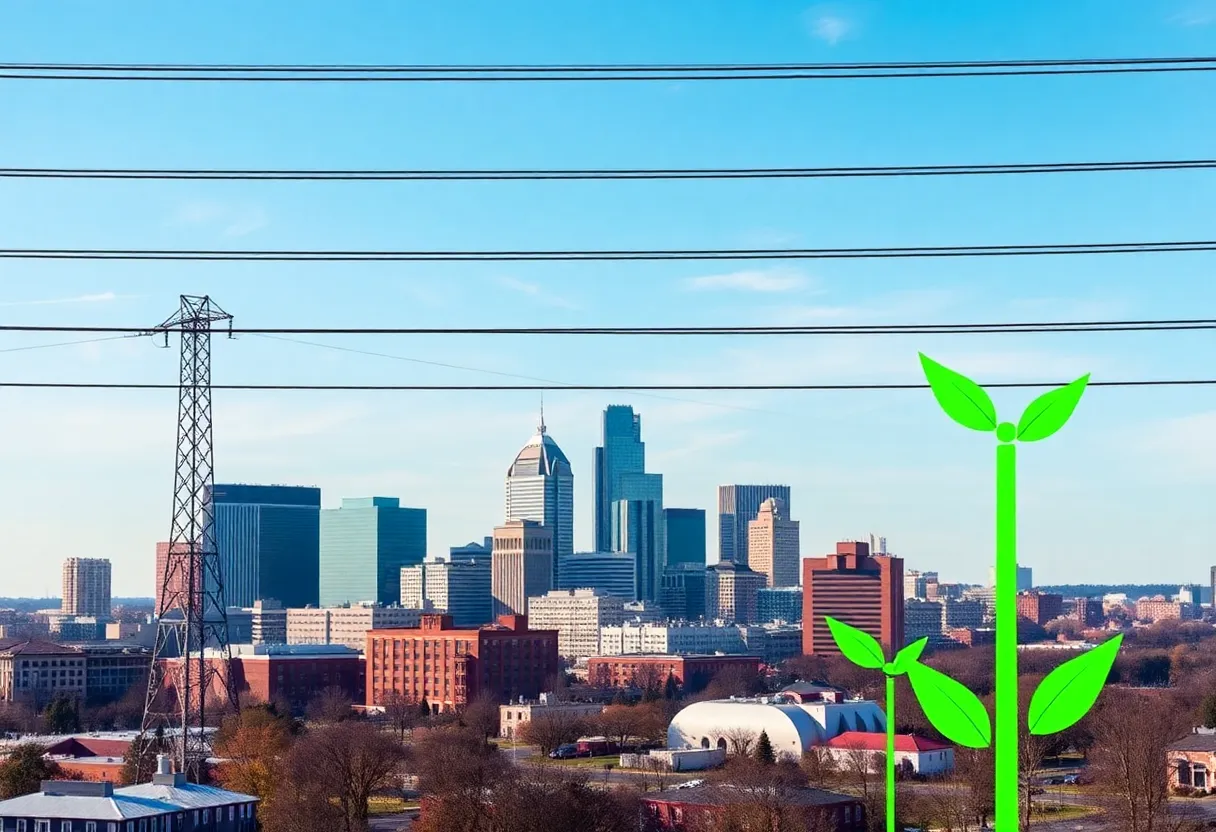Louisville, October 22, 2025
In a major announcement, LG&E and KU have reached a settlement to reduce the proposed electric rate hike for Louisville customers from 12% to 6%, bringing annual savings of about $45 for residential users starting January 2026. This decision was influenced by concerns over affordability, rising fuel costs, and necessary infrastructure upgrades. The settlement also includes targeted support measures for low-income households and emphasizes the utility’s commitment to renewable energy investments, reflecting a balanced approach to meet both consumer needs and sustainability goals.
Louisville Utility Company Reaches Settlement Reducing Proposed Rate Hike
In a significant development for Louisville residents and businesses, LG&E and KU have finalized a settlement agreement that cuts their proposed electric rate increase from 12% to 6% for customers starting January 2026. This decision, approved by state regulators and consumer advocates, provides substantial relief amid rising energy costs. The adjustment ensures average residential users save approximately $45 annually, easing financial pressures on households in the region.
The settlement addresses concerns over the utility’s initial rate hike proposal, which had raised alarms about affordability in a metro area with diverse economic needs. By halving the increase, the agreement strikes a balance between maintaining service reliability and protecting consumers from steeper bills. Local businesses, which often face higher energy demands, have welcomed the change, noting it prevents significant jumps in operational expenses that could impact pricing and competitiveness.
The utility attributed the original 12% hike to escalating fuel costs and necessary infrastructure upgrades, including enhancements to the power grid that support long-term stability. These factors have been compounded by broader economic trends, such as volatile global energy markets and investments in modernizing aging systems. The reduced rate hike reflects negotiations that considered these pressures while prioritizing customer input.
Key Provisions and Community Impact
Beyond the rate reduction, the settlement incorporates targeted support measures to aid vulnerable populations. This includes rebates for low-income households, designed to further offset costs for those most affected by any increase. Such provisions underscore a commitment to equitable access to essential services in Louisville, a city grappling with growth and socioeconomic diversity.
The agreement also highlights forward-looking strategies, particularly in renewable energy investments. Utility leadership has emphasized ongoing efforts to integrate cleaner power sources, which are vital for addressing climate challenges in Kentucky. As the region experiences population growth and increased energy demands, these initiatives aim to enhance grid reliability while promoting sustainability. The metro area’s unique position—balancing urban expansion with environmental concerns—makes such balanced approaches essential for future resilience.
Community groups have responded positively, viewing the resolution as a victory for ratepayers who advocated for moderation during the regulatory process. This outcome demonstrates the effectiveness of collaborative dialogue between utilities, regulators, and advocates in shaping policies that serve the public interest. For Louisville, where energy reliability directly influences daily life and economic activity, the settlement provides a clearer path forward.
Broader Context and Implications
The decision comes at a time when utilities nationwide face similar dilemmas, but in Kentucky, local dynamics add layers of complexity. Rising fuel prices, driven by international supply issues and domestic demand, have pressured providers to seek rate adjustments. Infrastructure upgrades, meanwhile, are non-negotiable for preventing outages and accommodating new technologies like electric vehicles and smart grids.
In Louisville specifically, the metro area’s rapid development amplifies these challenges. Expanding residential and commercial sectors require robust energy infrastructure, yet ratepayers expect affordability. The 6% hike, while still an increase, mitigates the original proposal’s potential burden, allowing households to budget more predictably. Businesses, from small shops to larger operations, benefit by avoiding cost escalations that could hinder hiring or expansion plans.
Looking ahead, the inclusion of rebates and renewable commitments signals a holistic approach. Low-income programs ensure that savings reach those in need, fostering inclusivity. On the environmental front, investing in renewables positions LG&E and KU to reduce carbon footprints and adapt to stricter regulations. As climate challenges like extreme weather become more frequent in the region, these steps enhance long-term viability.
For residents, the settlement means tangible savings starting next year, with the annual $45 reduction translating to meaningful relief over time. Businesses gain stability, supporting the local economy’s momentum. Overall, this resolution exemplifies how regulatory oversight can temper utility needs with community priorities, setting a precedent for future rate cases in Kentucky.
The process leading to this agreement involved extensive review, highlighting the role of state oversight in protecting consumers. As Louisville continues to grow, maintaining this balance will be crucial for sustaining quality of life and economic progress.
FAQ
What is the new rate hike percentage for LG&E and KU customers? The proposed electric rate hike has been reduced from 12% to 6% for Louisville customers starting January 2026.
How much will residential users save annually? The agreement saves residential users an average of $45 annually.
What factors led to the original rate hike proposal? The utility cited rising fuel costs and infrastructure upgrades as factors.
Are there any support measures for low-income households? The deal includes rebates for low-income households.
What is the utility’s focus on sustainability? CEO John Nowak emphasized commitments to renewable energy investments.
How have local businesses reacted? Local businesses expressed relief, avoiding steeper operational expenses.
What broader challenges does this address? This resolution balances affordability with grid reliability in a growing metro area facing climate challenges.
How has the community responded? Community groups hailed it as a win for ratepayers.
| Feature | Description |
|---|---|
| Rate Hike Reduction | From 12% to 6% starting January 2026 |
| Annual Savings for Residents | Average of $45 per household |
| Reasons for Original Proposal | Rising fuel costs and infrastructure upgrades |
| Support for Low-Income | Rebates included in the deal |
| Sustainability Focus | Commitments to renewable energy investments |
| Business Impact | Avoids steeper operational expenses |
| Overall Balance | Affordability with grid reliability amid climate challenges |
| Community Reaction | Hailed as a win for ratepayers |





